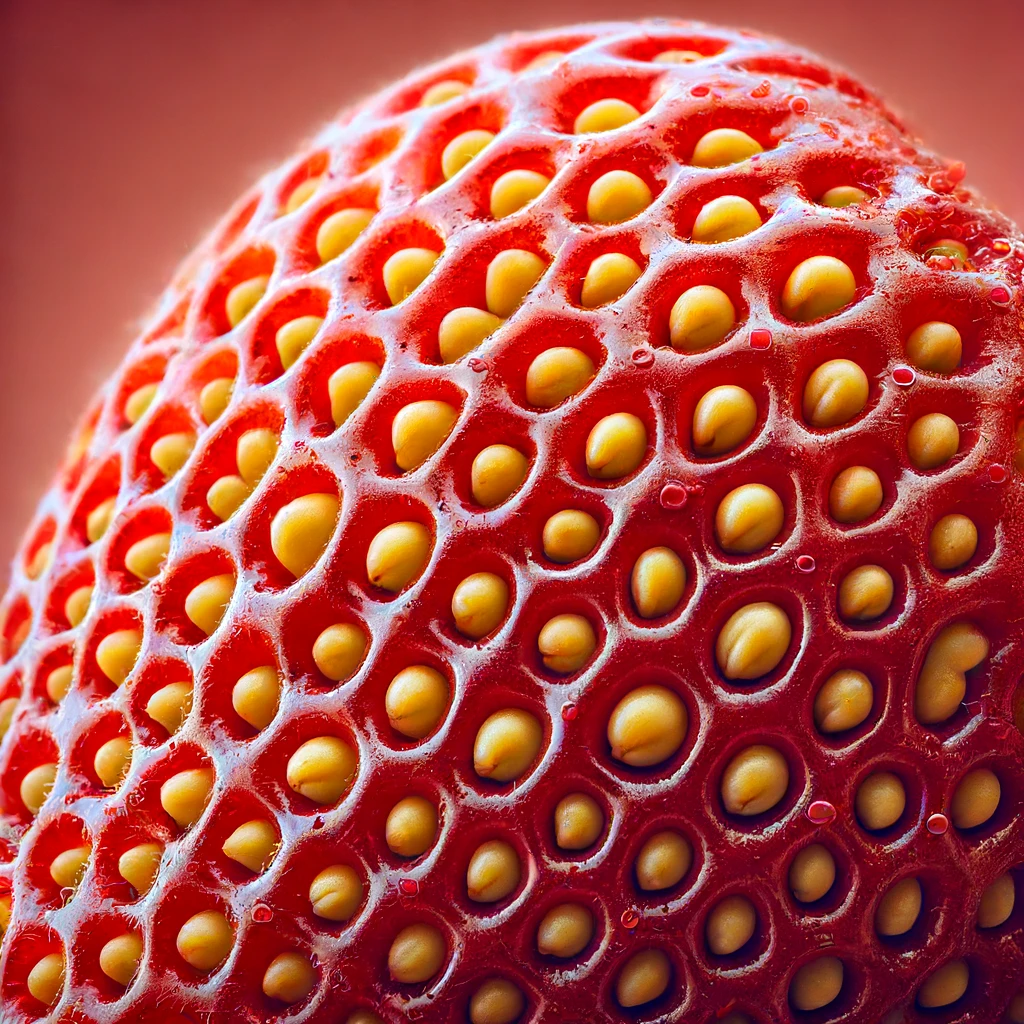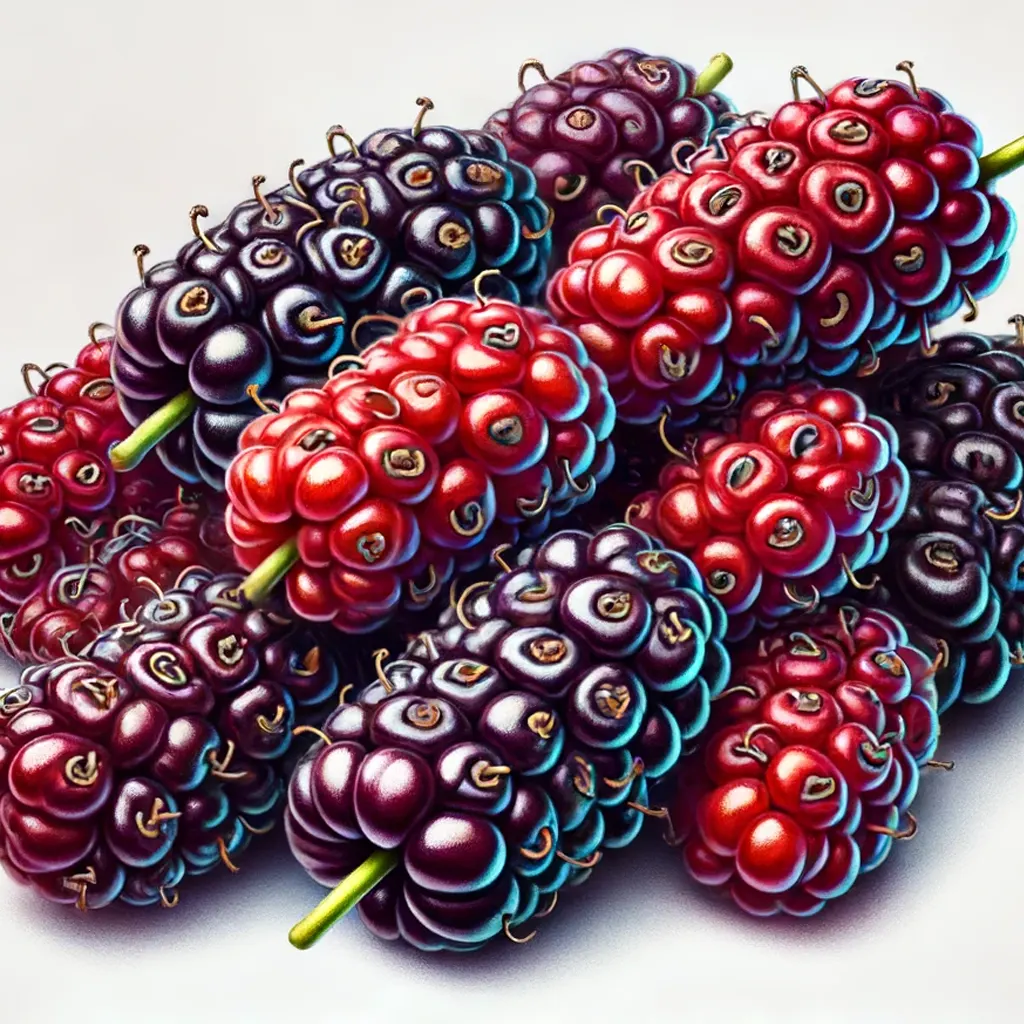Aggregate Fruits
Introduction to Aggregate Fruits
Aggregate fruits are a fascinating category of fruits that develop from a single flower with multiple pistils. Each pistil forms a small fruitlet, and these fruitlets are clustered together on a single receptacle to form the aggregate fruit. This unique development process results in a fruit that appears as a collection of smaller fruits fused together.
Aggregate fruits are commonly enjoyed for their varied textures and flavors, making them popular in a wide range of culinary applications. They play a significant role in the diet of both humans and animals, contributing to seed dispersal and the propagation of plant species.
Types of Aggregate Fruits
Drupelets
Drupelets are small individual units that make up an aggregate fruit. Each drupelet resembles a tiny drupe and contains a single seed. Raspberries and blackberries are prime examples of aggregate fruits composed of drupelets.
Achenes
Achenes are small, dry fruitlets found in some aggregate fruits. Each achene contains a single seed and is often found on the surface of fleshy fruits. The strawberry is a well-known example of an aggregate fruit with achenes.
Berries
In some cases, aggregate fruits can also be classified as berries when the small fruitlets are fleshy. This classification can vary depending on botanical definitions and the specific characteristics of the fruitlets.
Detailed Examples and Images

Drupelets
Raspberries and blackberries are classic examples of aggregate fruits composed of drupelets. These fruits develop from a single flower with multiple pistils, where each pistil transforms into an individual drupelet. As the fruit matures, these drupelets cluster together on a central receptacle, forming the aggregate structure. Each drupelet contains a single seed, contributing to the characteristic texture and appearance of these fruits.
The unique arrangement of drupelets influences both texture and flavor. Each drupelet bursts with its own juice, offering a mix of sweet and tart notes. This texture, combined with the vibrant coloration-from deep red in raspberries to dark purple or black in blackberries-is due to high concentrations of anthocyanins, powerful antioxidants that provide numerous health benefits, including anti-inflammatory and anti-cancer properties. Additionally, these fruits are rich in vitamins C and K, dietary fiber, and essential minerals like manganese.
Raspberries and blackberries are versatile in the kitchen. They can be enjoyed fresh, added to salads, used in desserts like pies and tarts, or processed into jams, jellies, and sauces. They are also great in smoothies and as toppings for cereals and yogurt, enhancing both flavor and nutritional value
- Aggregate Structure: Composed of multiple small drupes, each containing a single seed, clustered together on a central receptacle.
- Flavor Profile: Each drupelet offers a burst of juice, creating a complex mix of sweet and tart flavors.
- Health Benefits: High in antioxidants like anthocyanins, which have anti-inflammatory and anti-cancer properties.
- Nutritional Value: Rich in vitamins C and K, dietary fiber, and essential minerals such as manganese.
- Culinary Uses: Versatile in the kitchen, perfect for fresh consumption, salads, desserts, and processed forms like jams and sauces.
- Growth and Development: Formed from a single flower with multiple pistils, where each ovule becomes a drupelet, merging to form the whole fruit.

Achenes
Strawberries are an example of aggregate fruits with achenes. Each tiny seed-like structure on the strawberry's surface is an achene. The fleshy part of the strawberry is derived from the receptacle that holds the achenes, making it a unique and popular fruit in many cuisines. The texture and taste of strawberries are enhanced by these achenes, providing a delightful eating experience.
The presence of achenes on the strawberry's surface not only adds a slight crunch but also contributes to the fruit's overall nutritional profile. Strawberries are rich in vitamins, particularly vitamin C, and contain beneficial antioxidants such as ellagic acid. These compounds offer health benefits including improved skin health, reduced inflammation, and enhanced immune function. The combination of sweet, juicy flesh with the subtle crunch of achenes makes strawberries a favorite in both sweet and savory dishes.
- Aggregate Structure: Strawberries are formed from multiple pistils of a single flower, with achenes on the surface
- Texture and Flavor: The achenes add a slight crunch, enhancing the sweet and juicy flesh.
- Nutritional Value: High in vitamin C, antioxidants like ellagic acid, and dietary fiber.
- Health Benefits: Supports skin health, reduces inflammation, and boosts immune function.
- Culinary Uses: Versatile in various dishes, including desserts, salads, beverages, and as a fresh snack.

Berries
In some botanical contexts, fruits like the mulberry can be considered aggregate fruits that also fit the berry classification. These fruits consist of multiple small, fleshy fruitlets clustered together. The juicy and flavorful nature of these fruits makes them a favorite among many, both for fresh consumption and in various recipes.
The clustered fruitlets of mulberries create a unique texture, combining juiciness with a slight chewiness that enhances their appeal. Mulberries are not only delicious but also packed with nutrients. They are a rich source of vitamins C and K, iron, and fiber. Additionally, mulberries contain resveratrol, a potent antioxidant known for its anti-aging and heart-protective properties. The sweet-tart flavor of mulberries makes them versatile in the kitchen, suitable for use in desserts, jams, jellies, and even savory dishes.
- Aggregate Structure: Mulberries are composed of multiple small, fleshy fruitlets clustered together.
- Texture and Flavor: Juicy with a slight chewiness, offering a sweet-tart taste.
- Nutritional Value: High in vitamins C and K, iron, fiber, and resveratrol.
- Health Benefits: Provides anti-aging effects, heart protection, and supports overall health.
- Culinary Uses: Ideal for fresh consumption, desserts, jams, jellies, and savory recipes.
Conclusion
Aggregate fruits showcase the complexity and diversity of fruit development in plants. By understanding the unique structures and types of aggregate fruits, gardeners and fruit enthusiasts can better appreciate their role in the ecosystem and their culinary uses. These fruits offer a wide range of flavors and textures, making them versatile ingredients in numerous dishes.
For more information on other types of fruits, explore the following links:
Additional Resources
To enhance your understanding, we provide a range of articles related to fruit development, uses, nutritional benefits, and cultivation. Explore these topics to become a more knowledgeable gardener and fruit enthusiast.

